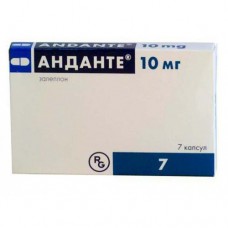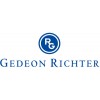Expiration date: 05/2026
The composition and form of issue:
Capsules. One capsule contains:
zaleplon 5 or 10 mg
excipients: starlak (mixture of lactose and corn starch) MCC magnesium stearate Indigo Carmine titanium dioxide sodium lauryl sulfate silicon dioxide, colloidal
the composition of the gelatin capsules:
the upper part of the Indigo Carmine, titanium dioxide, gelatin
the lower part of the Indigo Carmine, titanium dioxide, gelatin
in a contour acheikova package 7 PC. in the stack cartons 1 or 2 packs.
Description pharmaceutical form:
Capsules 5 mg: hard gelatin capsule size 4, cap — blue, opaque, body — light blue, opaque contents of capsules — powder of light blue color with a grayish tinge.
Capsules 10 mg: hard gelatin capsule size 2, cap blue, opaque, case — blue, opaque contents of capsules — powder of light blue color with a grayish tinge.
Pharmacokinetics:
If ingestion is rapidly and almost completely (about 71%) absorbed, reaching maximum concentration in blood after 1 h In the result of first-pass metabolism the absolute bioavailability is about 30%. Plasma concentration is directly proportional to the dose. The drug immediately after a meal maybe 2 hours to delay the time to maximum concentration, without affecting the completeness of absorption of the drug.
Is a fat-soluble compound, the volume of distribution after the on/in the introduction about (1, 4 ±0, 3) l/kg. the Probability of interaction with other drugs is very low (plasma protein binding — 60%). Passes into breast milk.
Primary metabolism involving aldehyde leads to the formation of 5 - oxazolone. CYP3A4 is also involved in the metabolism of zaleplon with the formation of deatil-zaleplon, which, in turn, using the aldehyde is converted into 5-oxo-deatil-zaleplon. Further oxidation products undergo conjugation with glucuronic acid. All zaleplon metabolites devoid of activity. With daily doses up to 30 mg of cumulation is not observed. T1/2 zaleplon — about 1 hour
The excretion is in the form of inactive metabolites, mainly with urine (71%) and feces (17%). 57% of the dose found in the urine in the form of 5-oxazalone or its metabolites, 9% dose — 5-oxo-deatil-zaleplon or its metabolites, the remainder of the dose in the form of less important metabolites. Among the metabolites found in the stool, dominated by 5-oxazalone. Rapidly excreted from the body.
Pharmacokinetics in elderly patients, including over 75 years of age is not significantly different from that in young healthy patients.
Zaleplon pharmacokinetics in patients with renal insufficiency is not significantly different from that in healthy, although the level of active metabolites are higher.
Description pharmacological action:
Hypnotic pyrazolo-pyrimidine series in chemical structure different from benzodiazepines and other hypnotic drugs. Selectively bind to benzodiazepine receptors type 1 (omega-1). Significantly reduces the latent time to fall asleep prolong sleep time (in the first half of the night), does not cause changes in the ratio of different sleep phases. Doses of 5 and 10 mg did not cause pharmacological tolerance at 2-4 weeks of admission.
Benzodiazepinove stimulates receptors (omega) receptor complexes of gamma-aminobutyric acid type Interaction with omega-receptors leads to the discovery of neuronal Informix channels for chlorine ions, the development of giperpoliarizatia and strengthen the processes of inhibition in (CNS).
Indications:
Severe forms of sleep disorders (difficulty falling asleep), leading to excessive fatigue, impairing daily activity and reduce performance.
Contraindications:
- hypersensitivity to any component of the drug
- severe liver failure
- syndrome night apnea
- severe pulmonary insufficiency
- myasthenia gravis
- pregnancy
- breastfeeding
- children up to age 18 years.
With caution:
- chronic pulmonary insufficiency
- hepatic and/or renal failure
- alcohol or drug dependence (including history)
- depression.
Application of pregnancy and breast-feeding:
Due to the lack of data on use during pregnancy application zaleplon during pregnancy is not recommended. When prescribing the drug to women of childbearing age the doctor should in every case to warn patients about the need for immediate treatment to the doctor in case of pregnancy or when planning pregnancy.
If necessary, use zaleplon in the last trimester of pregnancy or the use of large doses of the drug at the time of birth the newborn may develop hypothermia, muscle hypotension, mild respiratory failure as the result of the pharmacological action of the drug. Newborns of mothers who regularly took benzodiazepines or benzodiazepinovogo the drug in the last weeks of pregnancy may develop physical dependence and risk of withdrawal symptoms. Due to the penetration of the drug into breast milk the drug for breastfeeding women is contraindicated.
Side effects:
From the digestive system: abdominal pain, nausea, vomiting, diarrhea.
From the nervous system: most frequently headache, weakness, increased drowsiness, dizziness anterograde amnesia (accompanied by behavioral disorders) depression psychiatric and paradoxical reactions (more common in elderly patients): restlessness, irritability, aggression, paraesthesia, rage, nightmares, hallucinations, psychosis, disturbances of behavior, the development of physical dependence with symptoms of withdrawal even with therapeutic doses (the appearance of initial symptoms of sleep disorders are more severe and changes in mood, anxiety, anxiety syndrome — headache, myalgia, irritability, confusion) development of psychological dependence leading to abuse of the drug ataxia, tremor, irritability, violation of perception. In severe cases: aggression, depersonalization, hearing impairment, increased reaction to light, sound and physical stimuli, epileptic seizures.
Allergic reactions: skin rash, itching.
Drug interactions:
Alcohol consumption enhances the sedative effect zaleplon.
Simultaneous reception of antipsychotic (neuroleptic), other sleeping pills, anccioliticakih, sedative, antidepressant, antiepileptic, anesthetic, sedative antihistamines, narcotic analgesics leads to increased sedative effect zaleplon.
While the use of narcotic analgesics the possible emergence of a euphoric effect, leading to the development of drug dependence.
Being a nonspecific inhibitor of hepatic enzymes (aldehyde and CYP3A4), cimetidine increases the concentration of zaleplon in the plasma by 85%.
Selective blockers CYP3A4 (ketoconazole, erythromycin) can increase the concentration of zaleplon in the plasma and increase its sedative effect may sometimes require adjustment of the dose zaleplon.
Numerous strong hepatic inducers (e.g. CYP3A4), such as rifampicin, carbamazepine, derivatives of phenobarbital — may decrease the effectiveness of zaleplon 25%.
Zaleplon does not affect the pharmacodynamics and kinetics of digoxin and warfarin dose adjustment of these drugs is not required because of their low therapeutic index.
Interaction of ibuprofen with zaleplon not revealed.
Method of application and dose:
Inside, just before bedtime, 2 hours after a meal or after the patient feel that you can't sleep. The duration of treatment should not exceed 2 weeks.
The recommended dose for adults is 10 mg. Maximum daily dose of 10 mg (you should warn patients about the dangers of receiving repeated doses in one night!). Elderly patients 5 mg (because of the greater sensitivity to sleeping pills).
When liver failure light and moderate daily dose of 5 mg (due to slow elimination from the body).
In renal insufficiency, mild and moderate severity dose adjustment is not required. Safety data of the drug in case of severe renal failure do not exist.
Children: data on use of the drug by children under the age of 18 years are not available, therefore in this age group zaleplon not appointed.
Overdose:
Data on acute overdose, drug blood overdose was not measured.
Similar to other benzodiazepines and benzodiazepinones drug overdose does not cause life-threatening conditions, if zaleplon not taken in combination with other CNS depressants, including alcohol. In case of overdose, you should never forget about the possibility of combined toxicity.
Symptoms: CNS depression, manifested in drowsiness up to coma. In the case of lung toxicity may be drowsiness, confusion, lethargy, in more severe cases — ataxia, hypotension, decreased blood pressure, respiratory failure, rarely coma, in very rare cases with a fatal outcome.
Treatment: according to preclinical studies, flumazenil is an antagonist of zaleplon, although studies do not confirm the effectiveness of flumazenil in overdose Andante. Flumazenil can be used as an antidote. In the first hour after the overdose in the patient who is conscious, it should be cause vomiting the patient, who is unconscious, washed stomach, designate activated carbon. Monitoring of cardiac and respiratory activities carried out in the ICU.
Special instructions:
Before you start treatment, you should warn the patient about the brevity of treatment and the possibility of development of withdrawal syndrome upon termination of drug treatment, Andante.
The drug can be administered elderly patients, including those older than 75 years. Pharmacokinetics zaleplon in this age group does not differ from that of healthy patients.
The duration of treatment should be as short as possible, in any case not to exceed 2 weeks. Extend the treatment is possible only after careful clinical examination of the patient.
Sleep disturbance may be the result of physical or mental illness. If after short-term treatment of Andante is not normal sleep or disturbed sleep progresses, should reconsider the diagnosis.
If the patient wakes up shortly after midnight after a short half-life of zaleplon, may require the appointment of another drug with a longer half-life. You should warn patients about the need to use no more than 1 table. for one night only.
Benzodiazepines and benzodiazepinovogo drugs short-acting in the course of a few weeks may be accompanied by a reduction in hypnotic effect.
Benzodiazepines and benzodiazepinovogo drugs can lead to the development of physical and psychological dependence, the probability of which is associated with taking large doses of the drug, prolonged treatment, alcohol and drug dependency.
If they have formed a physical dependence sudden removal of the drug leads to withdrawal symptoms: headache, muscle pain, pronounced anxiety, increased tension and irritability, psychomotor agitation, confusion. In severe cases, possible aggression, depersonalization, hearing impairment, paresthesias in extremities, increased reaction to light, sound and physical stimuli, hallucinations, and seizures.
Upon termination of treatment benzodiazepines and benzodiazepinetype drugs possible relapse or the appearance of transient and more pronounced than in the early treatment of insomnia symptoms (withdrawal syndrome). It is possible the development of other related phenomena, such as mood change, anxiety, sleep disturbances or anxiety.
Benzodiazepinovye benzodiazepines and drugs may cause the development of anterograde amnesia and disturbance of psychomotor functions. In order to avoid the development of these symptoms the drug should be taken only when patients have uninterrupted sleep at least 4 hours after taking the medicine.
Zaleplon treatment should be discontinued in case of increased excitability, irritability, aggression, disturbances of perception, nightmares, hallucinations, psychotic disorders, and especially disorders of behavior. Children and elderly patients are most likely to develop such symptoms.
The drug is not intended for the treatment of depression and/or anxiety, because they can be used to implement a suicidal intentions, often accompany depressive disorders. In the appointment of zaleplon patients with depression should prescribe a minimum dose to avoid deliberate overdose.
It is not recommended to appoint drug patients with severe hepatic insufficiency because of the risk of developing encephalopathy.
When lactose intolerance should take into account that tablet zaleplon 5 mg lactose and 67 mg, tablet 10 mg — 134 mg.
Sedation, amnesia, reduced concentration and muscle strength adversely affect the ability to control the car and perform other activities. During treatment should refrain from driving vehicles and occupation activities, require high concentration and psychomotor speed reactions.
Storage conditions:
(in sealed package).


